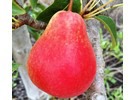In the 1990’s the first blushed pear varieties were bred and grown in South Africa and have been the market leader for blushed pears ever since. Of these, Cheeky® only made its debut in 2009 and continues to show promise for pear growers.
While the man behind Cheeky® is Taaibos Human from the Agricultural Research Council (ARC), Culdevco was responsible for the commercialization of the cultivar. This proudly South African blushed pear variety was the third significant addition to the range of pear varieties bred in two decades by the ARC and has been making waves ever since.
Plantings The majority of Cheeky® plantings are in the Ceres region and take up 51% of total hectare plantings. Wolseley/Tulbach is second on the list with 14%, Villiersdorp/Vyeboom follows with 11% and Groenland and Langkloof with 8%.
The majority of Cheeky® plantings are in the Ceres region and take up 51% of total hectare plantings. Wolseley/Tulbach is second on the list with 14%, Villiersdorp/Vyeboom follows with 11% and Groenland and Langkloof with 8%.
After the winter of 2018, another additional 80 hectares were planted which brings the total plantings of Cheeky® in South Africa to 462 hectares. About two-thirds of these plantings are already in the production stage and the rest is in the vegetative stage. In comparison with other pear cultivars planted over the last 6 years, Cheeky® has shown a 100% growth rate from 232 ha in 2013 to 462 ha in 2018.
Post-harvest productivity
The red colour development and pack out of Cheeky® this past season was very good. Overall the Cheeky® pear developed a bright red blush easily while the intensity of the red blush is not to the same extent negatively affected by heatwaves in January than other blush varieties. The occurrence of the internal breakdown was limited to insignificant levels when harvested at the recommended maturity (for more detail see under recommendations).
Cheeky® is genetically susceptible to rub/scuff marks if harvested at a too immature stage. In the 2018/19 season there were more fruit drop, more punctures and rub marks on all pears due to high wind speeds and the cooler climate in general during the fruit growing season.
Markets
Markets have been receiving Cheeky® very well because of its attractive blush colour, taste, and especially fruit size. Cheeky® is regarded as a high-value pear cultivar although the prices were more under pressure during the last season, as it were for most other pears as well. Some exporters experienced smaller fruit size on the Cheeky® when compared to previous seasons. Smaller fruit sized Cheeky® unfortunately competed with other smaller size blushed cultivars such as Rosemarie and Flamingo.
During the 2018/19 season, a total number of 493 081 equivalent standard pear cartons of Cheeky® and Cape Rose were exported (448 207 Cheeky® and 44 874 Cape Rose). Europe takes the biggest part of the pear market share (37%) followed by the Middle East (19%) and the Far East Asia (17%). Exports to Russia is about 13% and the UK 6%.
To read the full story, please click here.
Source: Hortgro.co.za
